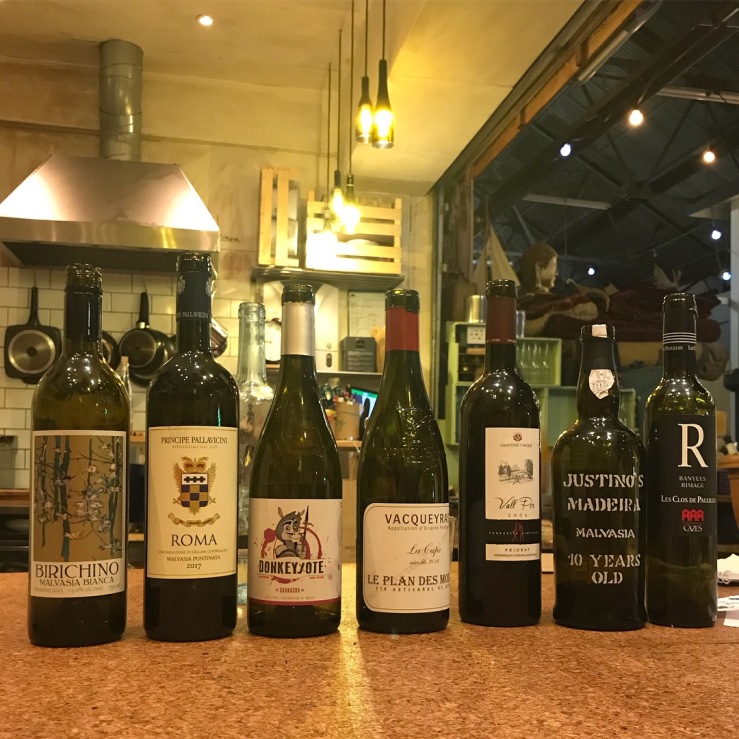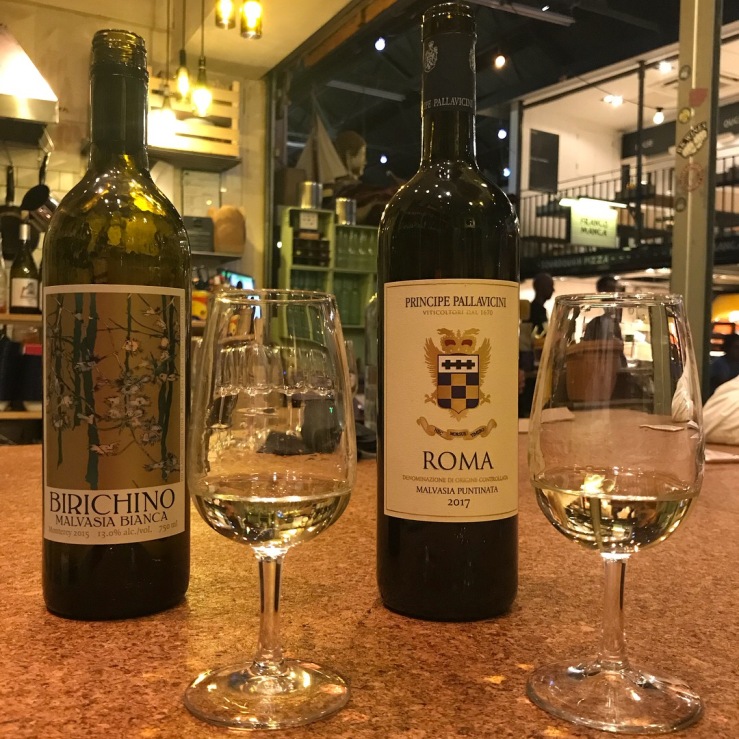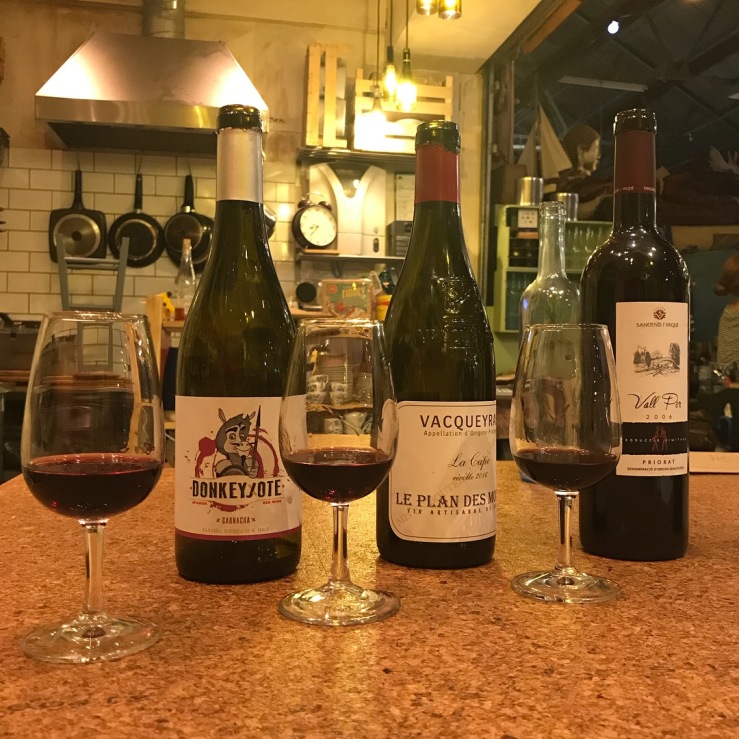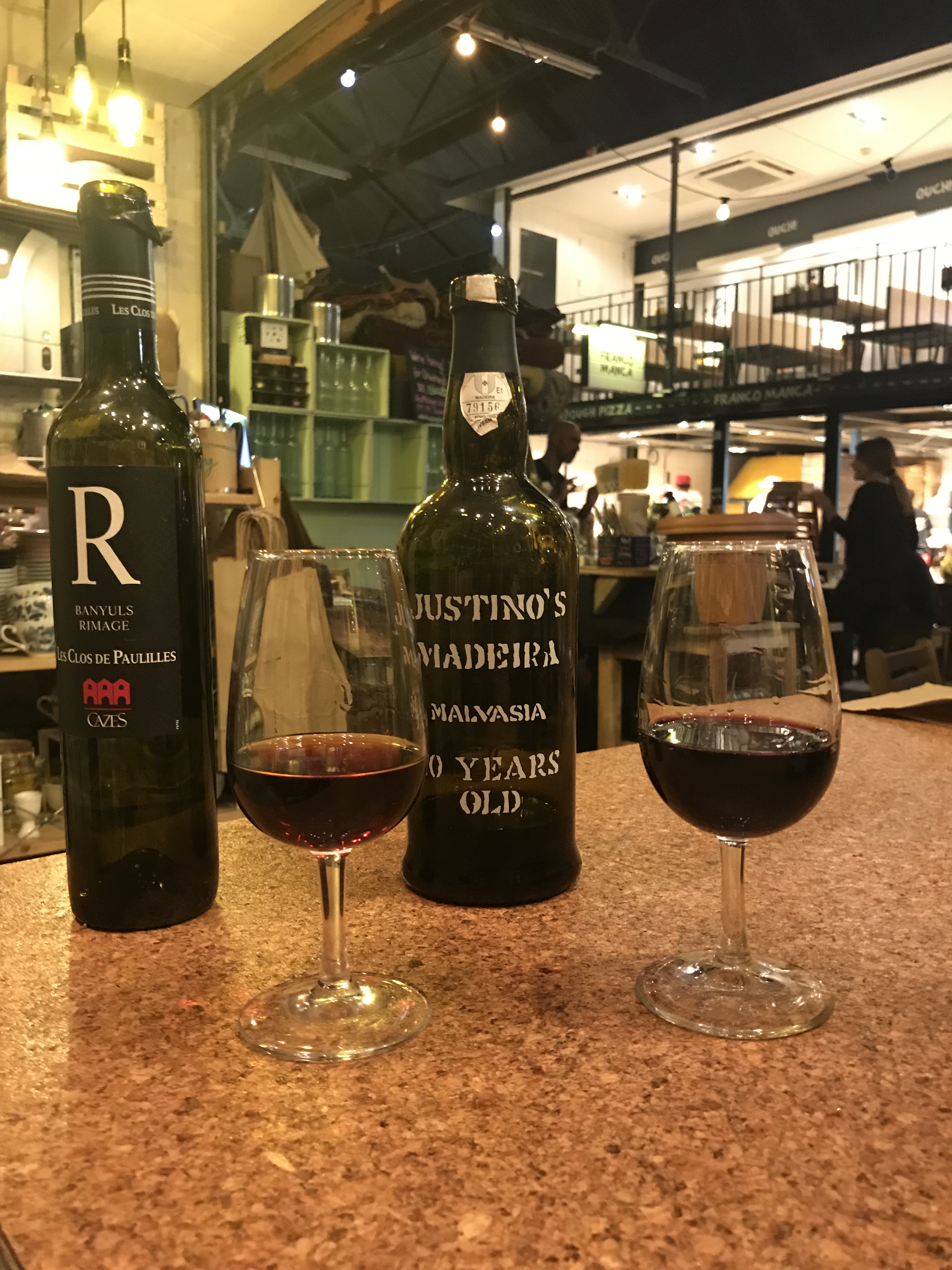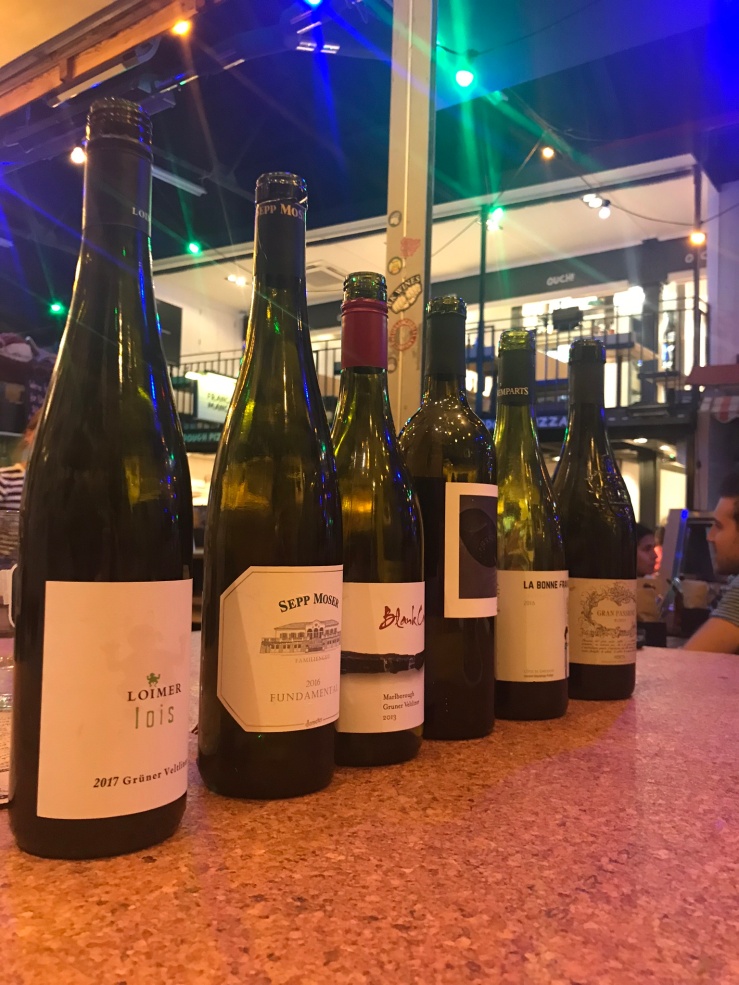
While the weather in London continues to flirt with temperatures of in the 20s and teasing us with afternoons of glorious warm sunshine it still feels too soon to turn to heavy Cabernet Sauvignons and hefty Pinot Noirs.
After a long, hot summer we’ve had our fill of fresh rosé and crisp, delicate Sancerre and fruit-driven Chablis, so what wines should we turn to in as we gently ease into Autumn?
At a recent Wine Wednesday Grapes Deconstructedevent at Unwinedin Tooting Market owner Laura Aitken talked us through two grape varieties that pair perfectly with crunchy leaves and cosy Autumn evenings.
Not just for ski holidays
First up was Gruner Veltliner. My experience to date with this native Austrian variety has been wine served alongside hotel dinners on ski holidays, and it’s true this refreshing white wine is widely acknowledged as food friendly.
75% of Gruner Veltliner comes from Austria, with Hungary, Slovenia and Czech Republic making up the bulk of the remainder and pockets of production in the US and New Zealand.
With the name meaning “green fruit” you can expect green apple on the nose alongside aromas of citrus and white pepper. These typical characteristics of Gruner Veltliner have earned it a reputation as “Sauvignon Blanc from a cool climate on steroids” but it’s also a popular choice for fans of Burgundy Chablis, which tends to have more citrus notes.
With a food friendly reputation and crowd-pleaser attributes, why is Gruner Veltliner not as famous as ubiquitous Sauvignon Blanc? Austrian Wine is still recovering from the 1985 scandal where several Austrian Wineries were caught illegally using diethylene glycol to adulterate their wines to replicate sweetness and full-bodied style of late harvest wines and as a result, relatively little was exported in subsequent years.
With their international reputation damaged, Austrian vineyards quietly continued production and focused on the home market. Then in 2002, Austrian Gruner Veltliner beat Burgundy wines in a blind taste test across the board sending shockwaves through the wine world. Since then, Austrian wine has still enjoyed an underdog reputation but is championed by sommeliers and wine bars as an ideal pairing for a number of dishes. As so little is still exported, it isn’t the cheapest wine on supermarket shelves, but the quality is hard to beat.
Lower Austrian Lois
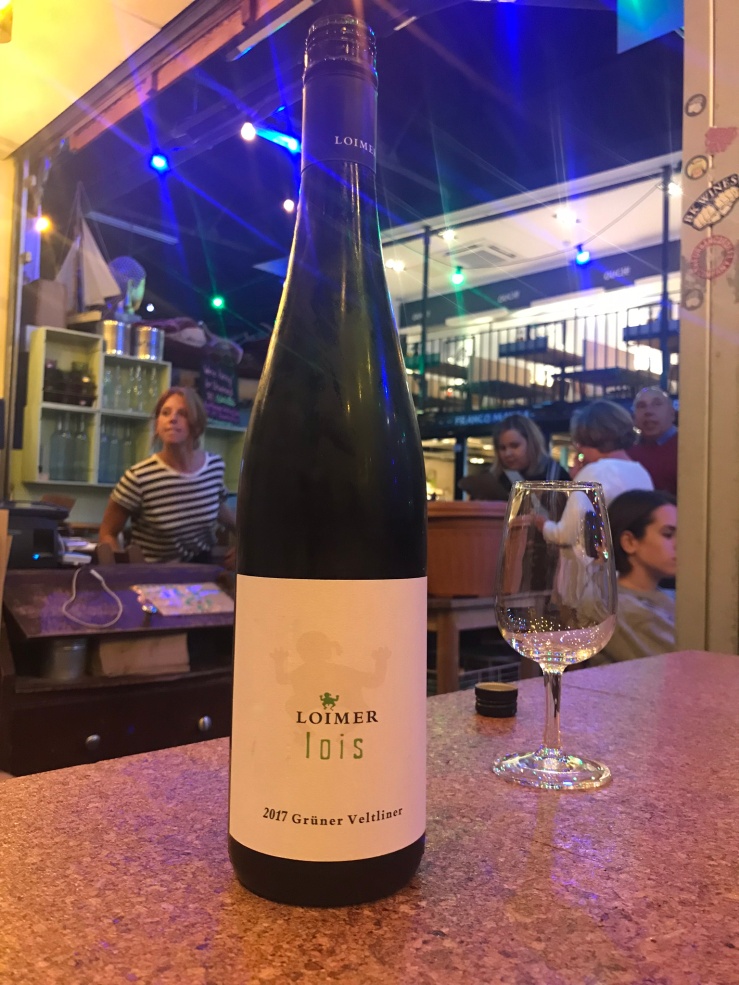
First up we tried Loimer ‘Lois’ 2017 from lower Austria. This winemaker produces a lot of single vineyard wines and the Gruner Veltliner was a textbook representation of the grape. It had green apple crispness but was low acidity with medium body. Given the shelf price of £18.00 it’s something of a treat for a midweek wine but would pair fantastically with pork chops for an autumnal dinner with friends. It was but was confirmed to be a little too easy to drink by the tasting group.
As good as apple pie
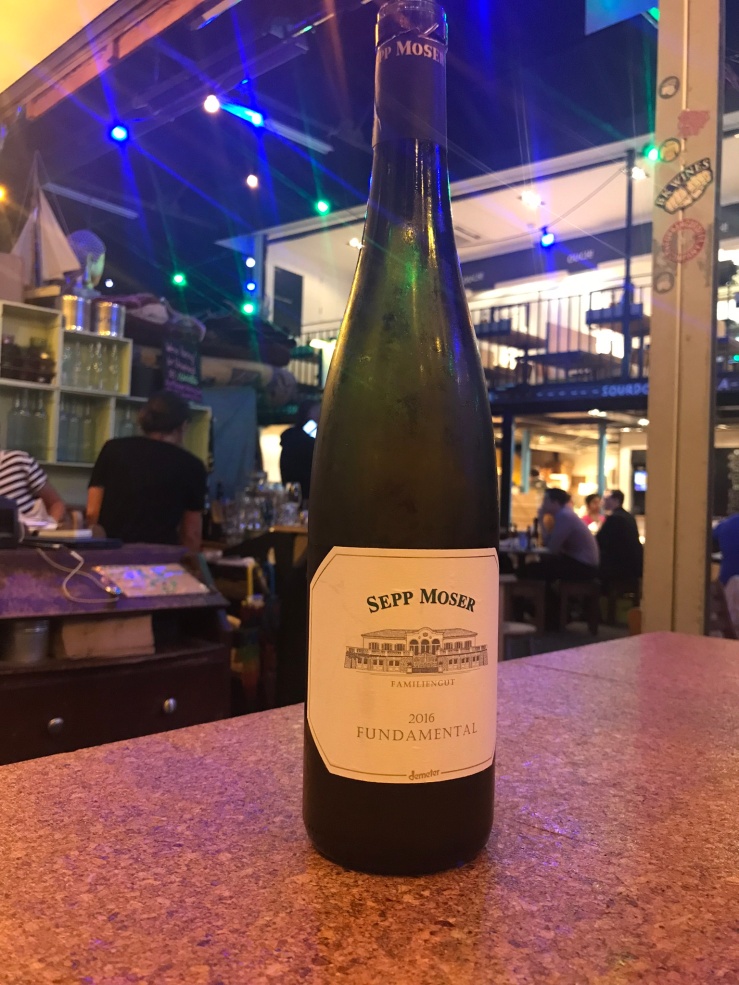
Next up was Sepp Moser ‘Fundamental’ 2017, which was cloudy, closer to the colour of baked apples in colour and aroma. There was a distinctive clove note rather than the usual white pepper, and it would have been delicious with a tart apple pie but at £22 a bottle was more of a quirky wine to sample than something to stock up on regularly.
NZ GV
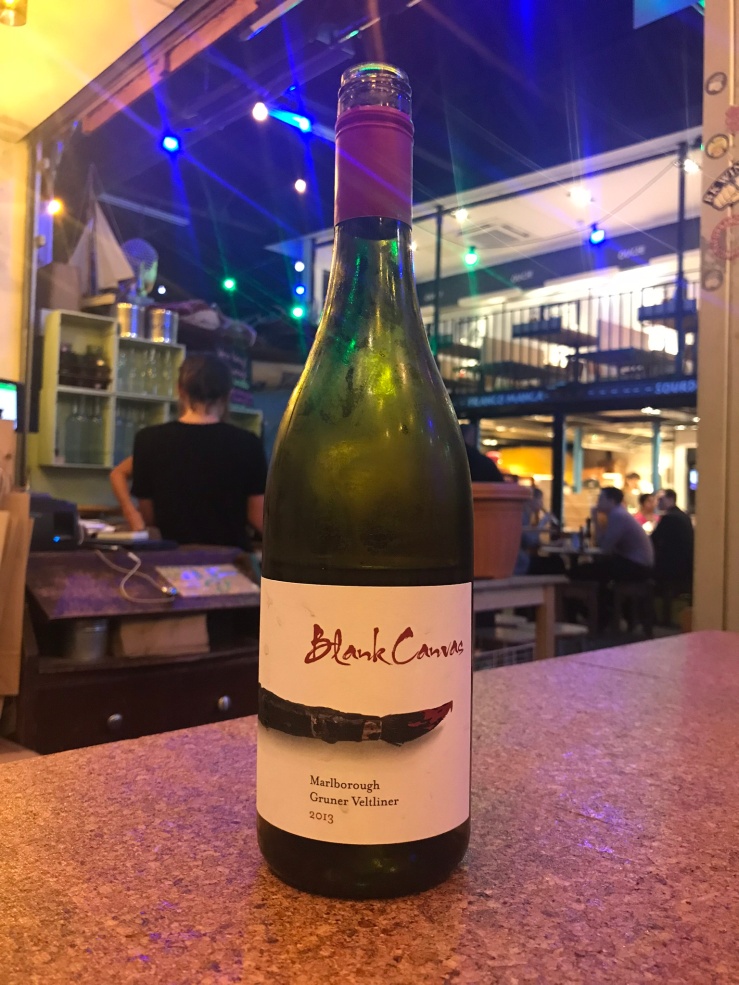
Our third Gruner Veltliner was Blank Canvas 2013 from Marlborough, New Zealand which was my favourite of the three. Given Laura’s earlier description of Gruner Veltliner as a cool climate Sauvignon Blanc on steroids and Marlborough’s infamy as Sauvignon Blanc central, it was interesting to sample the difference the South Island climate made on this distinctive grape.
It had the aromatics of a Reisling, balanced and well-rounded with medium body and a decent acidity on the finish. The oak aging was evident, giving added complexity. For £19.50 this was one I’d pick up myself and save for a special autumn day.
Maligned Merlot
As usual with Wine Wednesday, we moved on to red next, sampling two reds side by side. Merlot is the most planted grape in France, with Italy following second, where Merlot is the fifth most planted behind native grape varieties.
This easy to grow and consistent grape is thin skinned and ripens early. It is often considered an insurance policy for when Cabernet doesn’t hold its own in a poor vintage.
Merlot was much maligned after the film Sideways was released in which the Pinot Noir loving protagonist trashed Merlot. Paul Giamatti and the filmmakers owe poor Merlot an apology as sales have still not recovered to 1990’s level.
Napa Merlot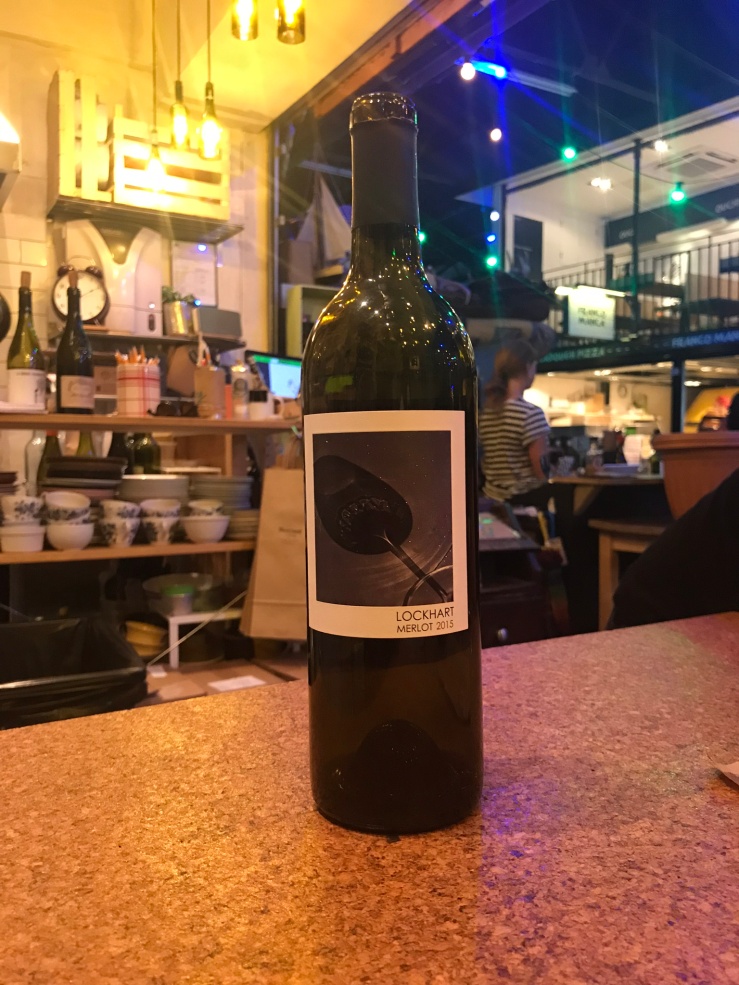
The fruit forward characteristics of Merlot shone through in our first wine tasting, a Napa Valley Merlot from 2015. It had an attractive pale ruby hue and aromas of red fruit and spice on the nose. On the palate the fruit shone through, with medium texture, medium tannins and a decent finish. Six months of oak aging gave it a little bit of a jammy texture, and it came in at £18.00 a bottle.
Merlot blend
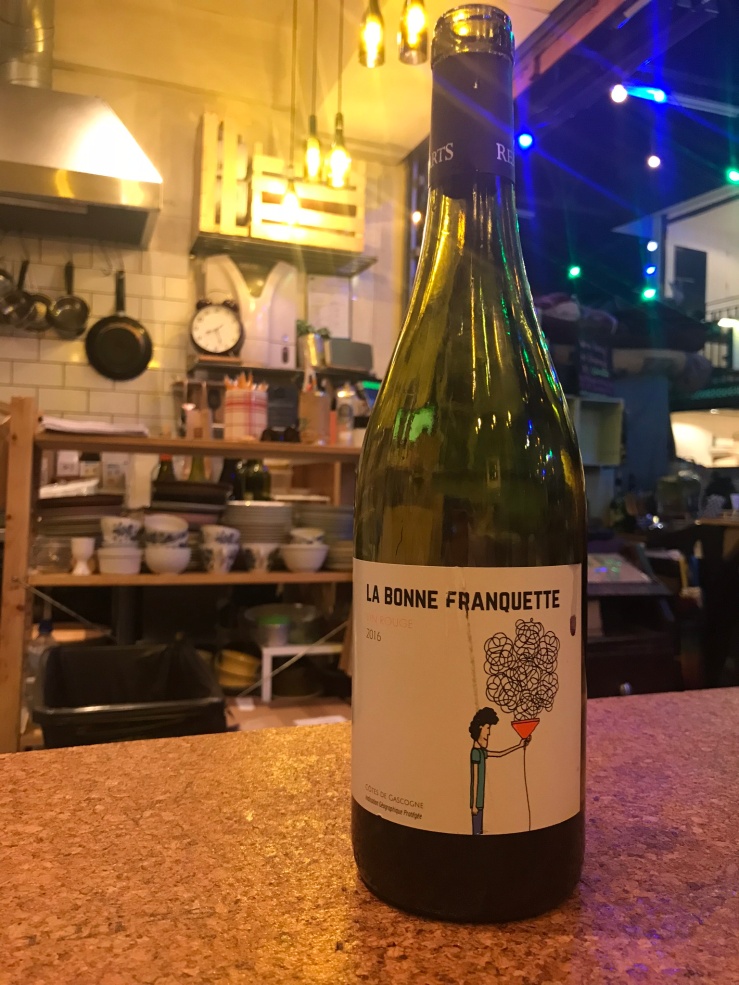
Demonstrating Merlot’s capabilities as a supporting act to Cabernet, we next sampled La Bonne Franquette Rouge, a 2016 Merlot / Cabernet Franc blend from Gascony. This had a ruby hue, and a leafy, wet herbal aroma on the nose. On the palate, red fruit shone through and it the blend had a lovely body. It had a spicy kick on the finish and a grippy mouthfeel thanks to the soft tannins and for £1200 a bottle it was the most affordable bottle of the night.
Passione for Merlot
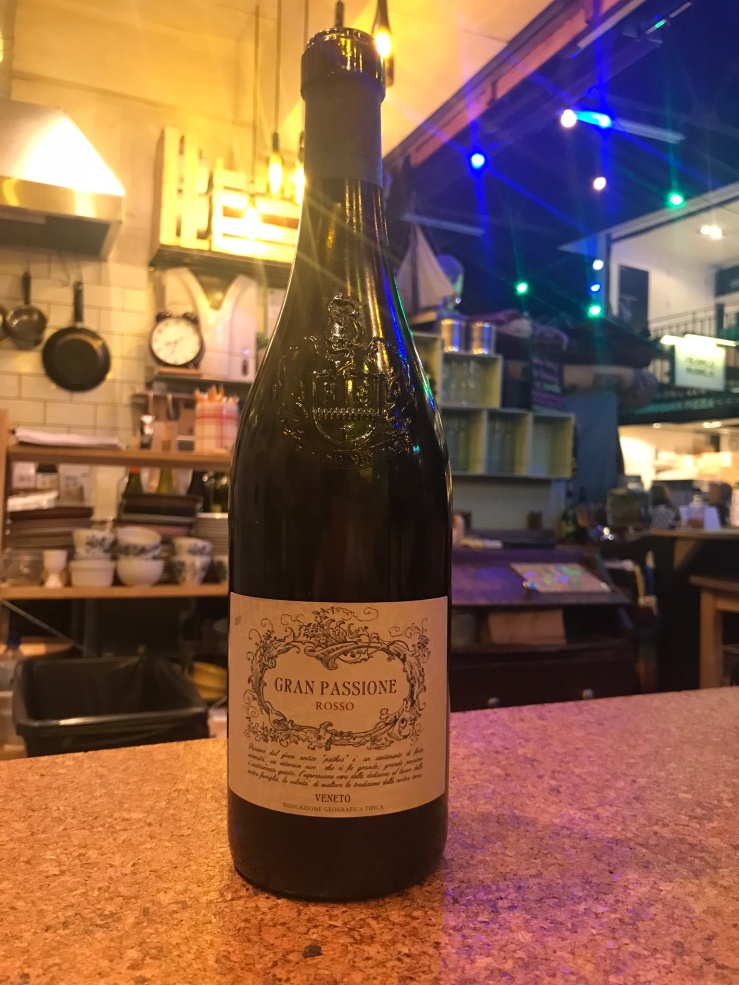 Last but certainly not least was my favourite for the night, a Grand Passione Vento Rosso, a beautiful 2017 Merlot. Slightly darker in colour, it had delicious spice balanced by bold yet balanced red fruit flavours. Finding a red that dances the line between medium and full bodied is an ongoing challenge in our household for my black fruit, big bold aged Rioja loving husband so I snapped up a bottle of that at £15.00 as a take home find of the night.
Last but certainly not least was my favourite for the night, a Grand Passione Vento Rosso, a beautiful 2017 Merlot. Slightly darker in colour, it had delicious spice balanced by bold yet balanced red fruit flavours. Finding a red that dances the line between medium and full bodied is an ongoing challenge in our household for my black fruit, big bold aged Rioja loving husband so I snapped up a bottle of that at £15.00 as a take home find of the night.
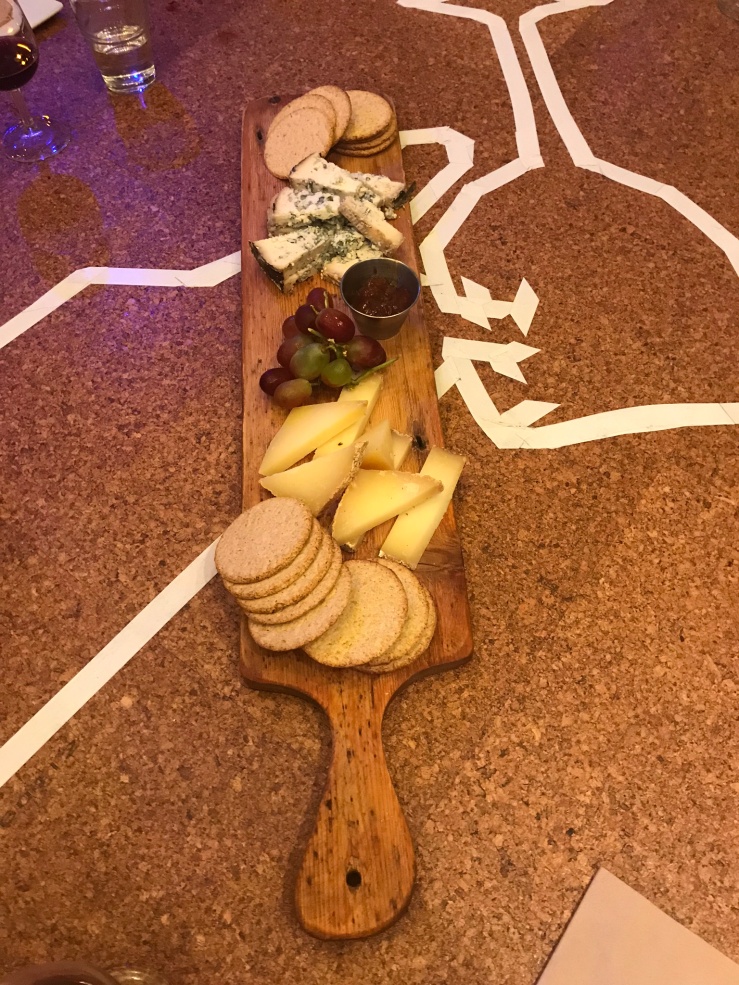
As ever, we finished our night with a delicious cheese board of Picos blue and Berskwell hard cheese. What’s more, there was 10% off any purchases of the night making for an affordable and informative evening in the lovely surroundings of Tooting Market. While I might need to try a few more Gruner Veltliner producers to find one with less obvious apple on the palate, I’m certainly a convert to Merlot as a go to reliable red wine.
